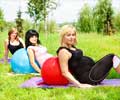Using mice as an experimental animal, researchers have discovered that despite its age female mice have a renewable number of oocytes(egg) supply in their ovaries.
Using mice as an experimental animal, researchers have discovered that despite its age female mice have a renewable number of oocytes (egg) supply in their ovaries.
As a preliminary step, this study would pave way for many further discoveries in the field of ovarian stem cell research and women’s fertility treatment – said Professor Jock Findlay from Prince Henry's Institute and Associate Professor Jeff Kerr from Monash's Department of Anatomy and Cell Biology.The discovery, by Professor Jock Findlay from Prince Henry's Institute and Associate Professor Jeff Kerr from Monash's Department of Anatomy and Cell Biology, has sparked controversy among biologists and challenged the theory, held for more than 50 years, that female mammals are born with a finite number of oocytes (eggs).
Two years ago, international researchers speculated that mice could continue to produce eggs throughout puberty and adulthood. Although their speculation caused debate throughout the scientific community, the scientists could not produce evidence to confirm their idea. However, Professor Findlay and Dr Kerr's research gives support to the theory. Their findings have been published in the July issue of Reproduction.
In the mammalian ovary, reproductive cells called oocytes (eggs) develop within ovarian follicles. In humans, the eggs are believed to die off from late in foetal life, after birth and into adult life. When egg numbers decline towards zero females can no longer reproduce – resulting in the condition we know as menopause.
Professor Findlay, Dr Kerr and their colleagues have found that the total number of eggs in young and normal healthy adult female mice do not decline over time and that overall egg number is maintained for longer than previously thought. Their research suggests that mice have a source of renewable oocytes, Professor Findlay said.
‘The mechanism behind renewable oocytes is still unknown,’ he said. ‘Although other scientists have suggested that the new eggs come from stem cells in the bone marrow or the ovary, we really don't know and further experimentation is needed to find out.’
Advertisement
One in six Australian couples faces some form of infertility. Due to the limitations and sensitivity of human ovaries, few studies have been conducted into the factors that influence egg survival, growth or death in relation to fertility.
Advertisement










